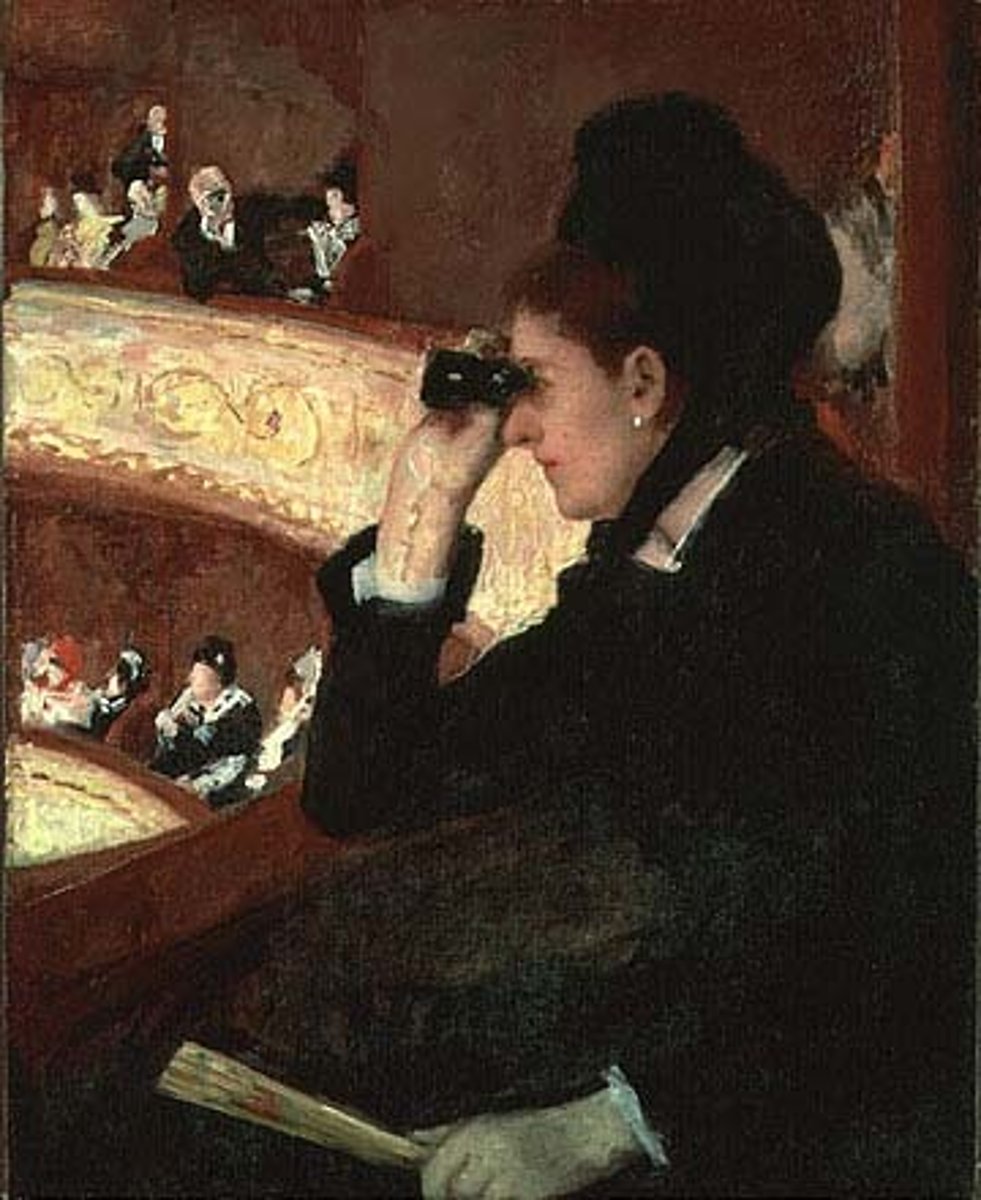Art History 225B Realism, Early Photography, and Impressionism
1/27
There's no tags or description
Looks like no tags are added yet.
Name | Mastery | Learn | Test | Matching | Spaced |
|---|
No study sessions yet.
28 Terms
avant-garde
term derived from the French military word meaning "before the group," or "vanguard"; denotes those artists or concepts of a strikingly new, experimental, or radical nature for the time
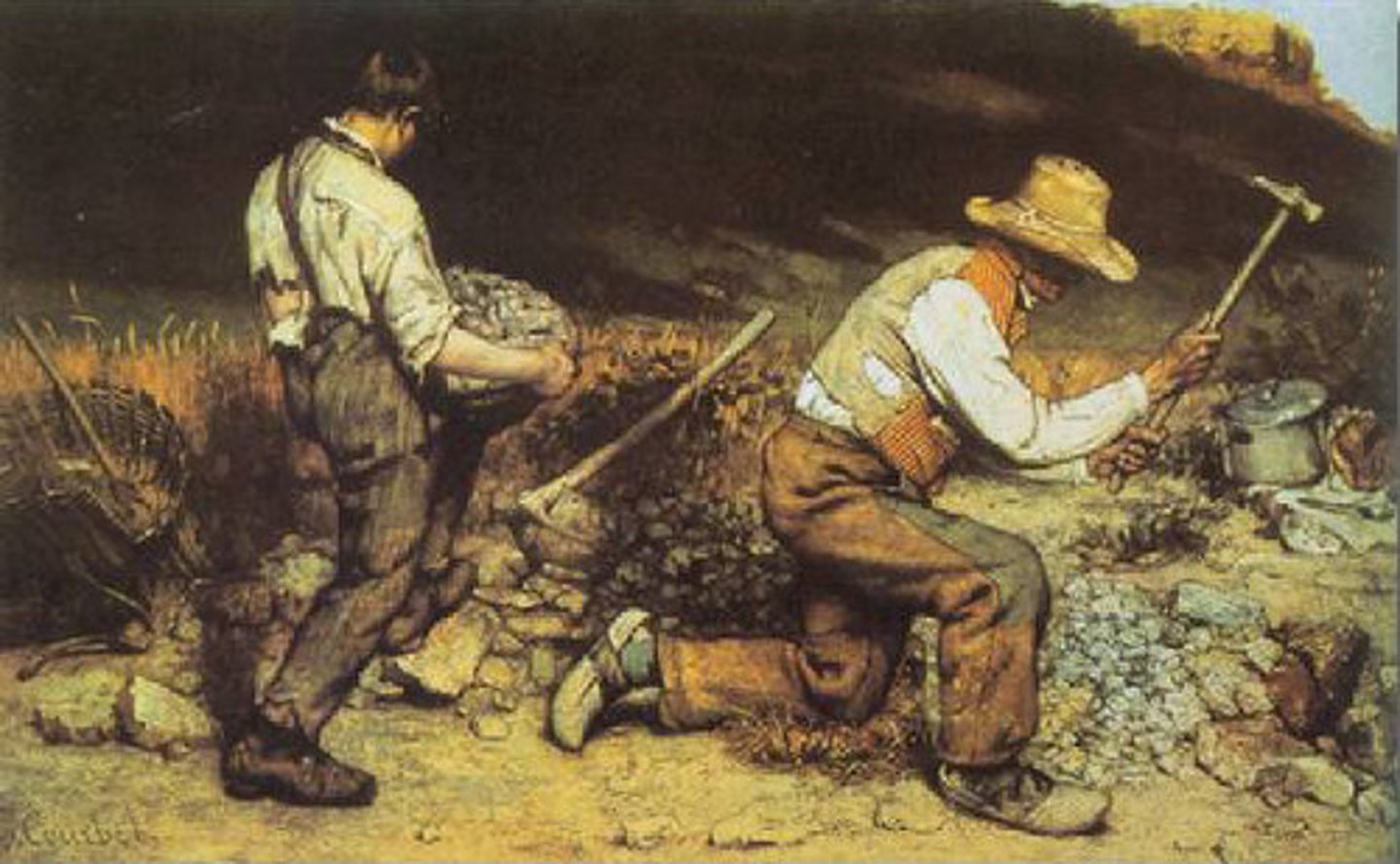
Salon des Refusés
"Salon of the Rejected Ones"; an exhibition of the work of art rejected by the official Salon
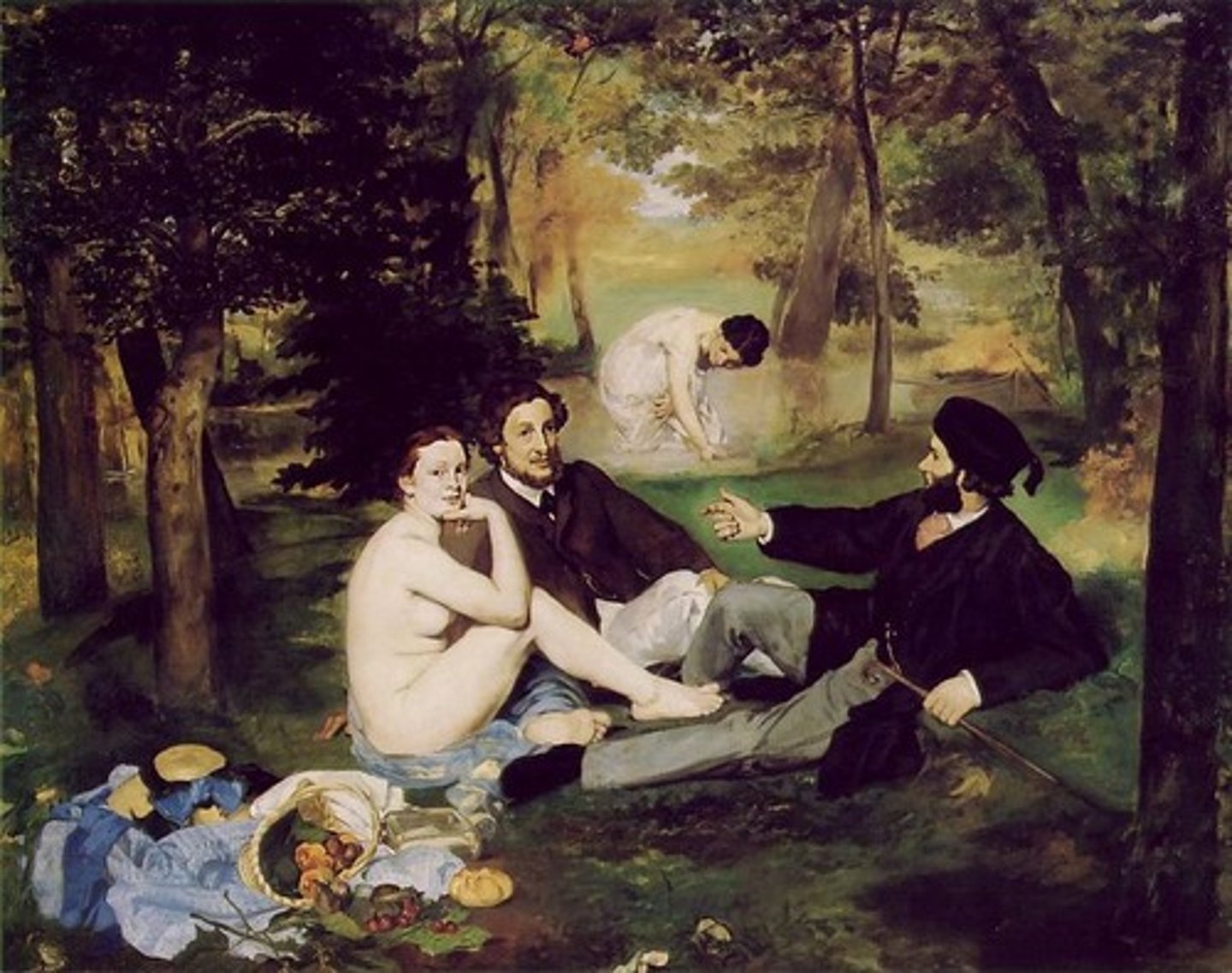
Impressionist Exhibitions
the series of 8 exhibitions held between 1874 and 1886 by a group of (mostly) French artists who wished to declare their independence from the Academy (& Academic style) & the official Salon - their works were not refused by the Salon, they did not even submit them for consideration
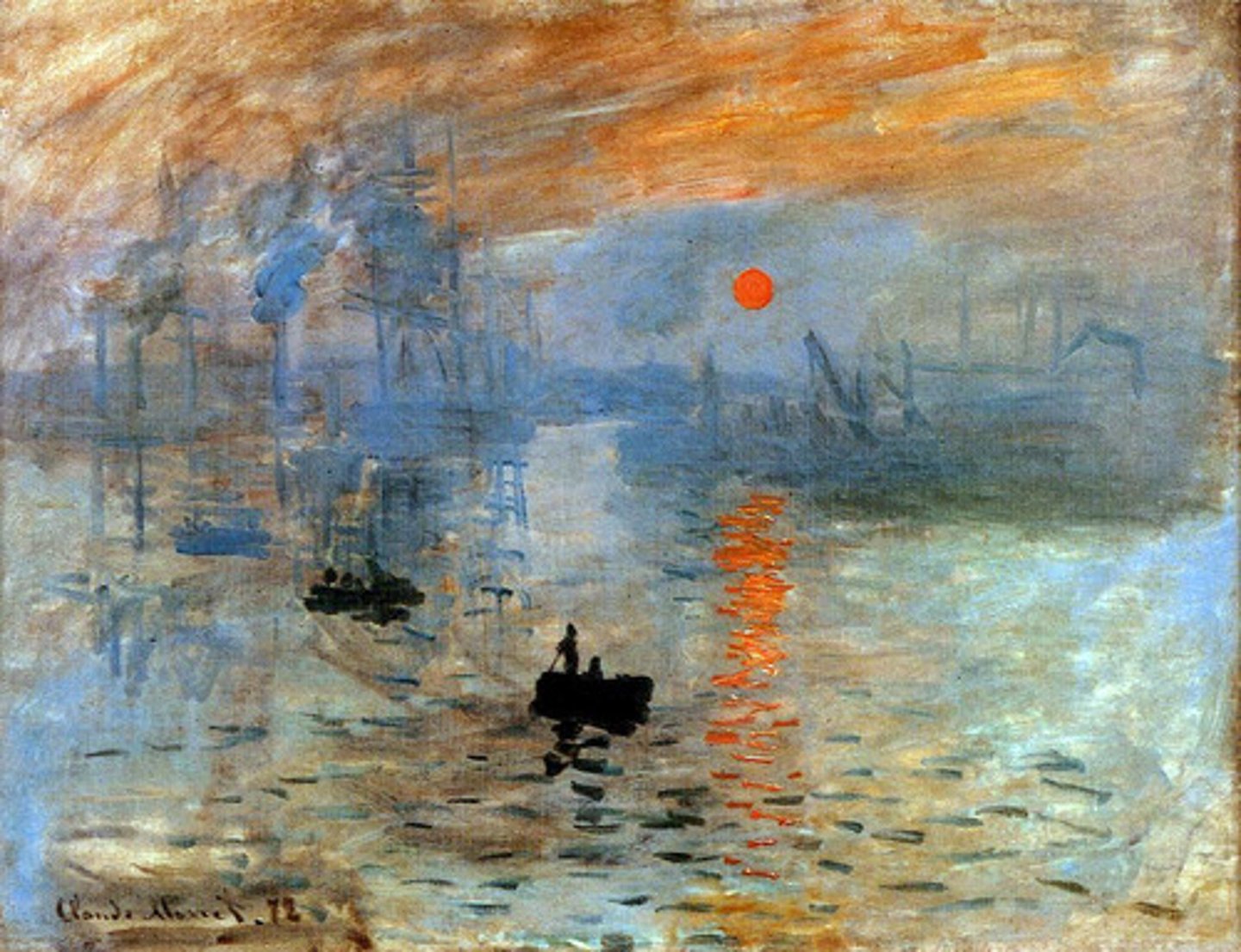
daguerreotype
an early photographic process that makes a positive print on a light-sensitized copperplate; invented and marketed in 1839 by LouisJacques-Mandé Daguerre
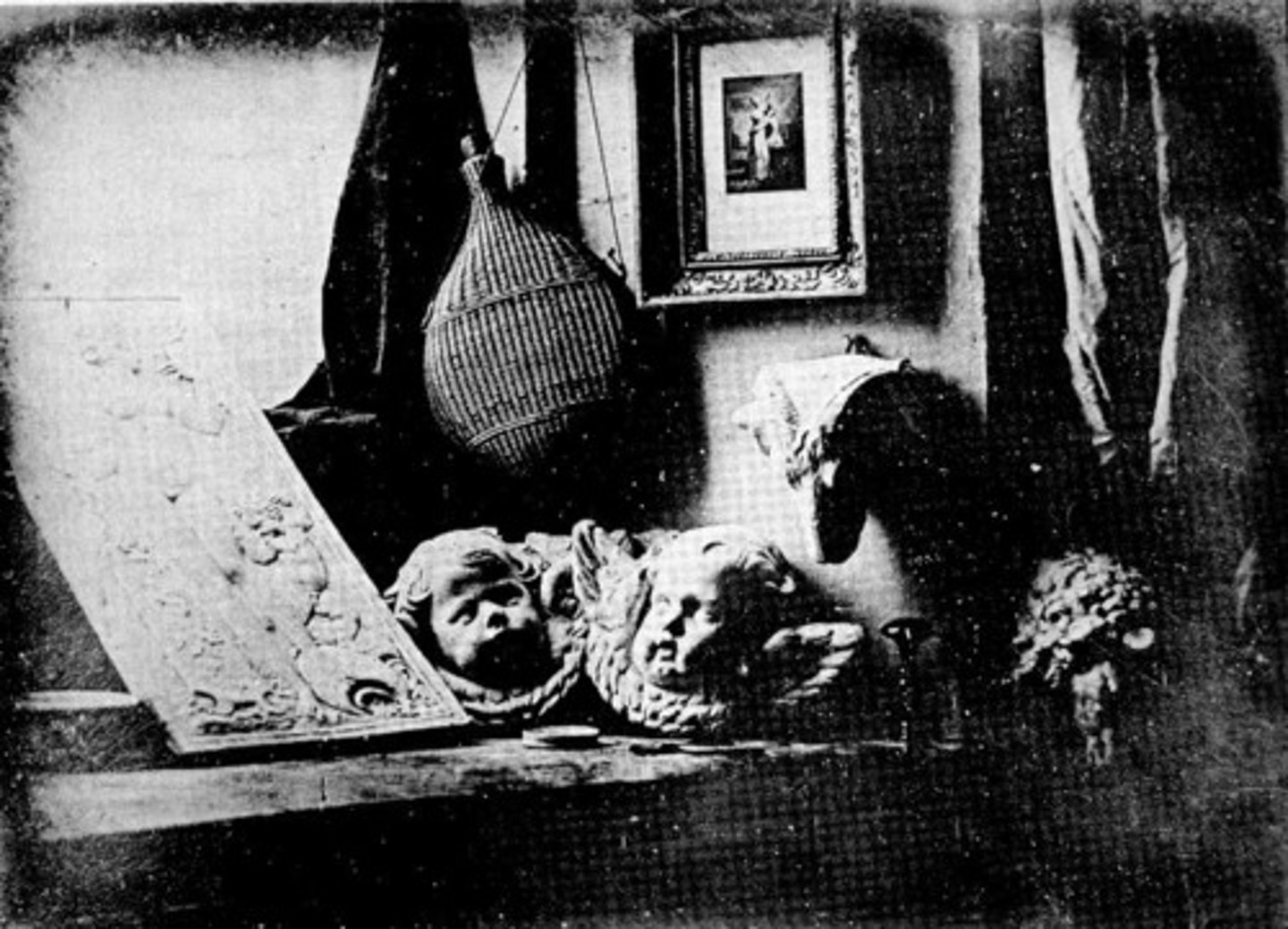
en plein air
"in the open air"; a reference to the Impressionist practice of painting outdoors, the better to record directly the fleeting effects of light & atmosphere
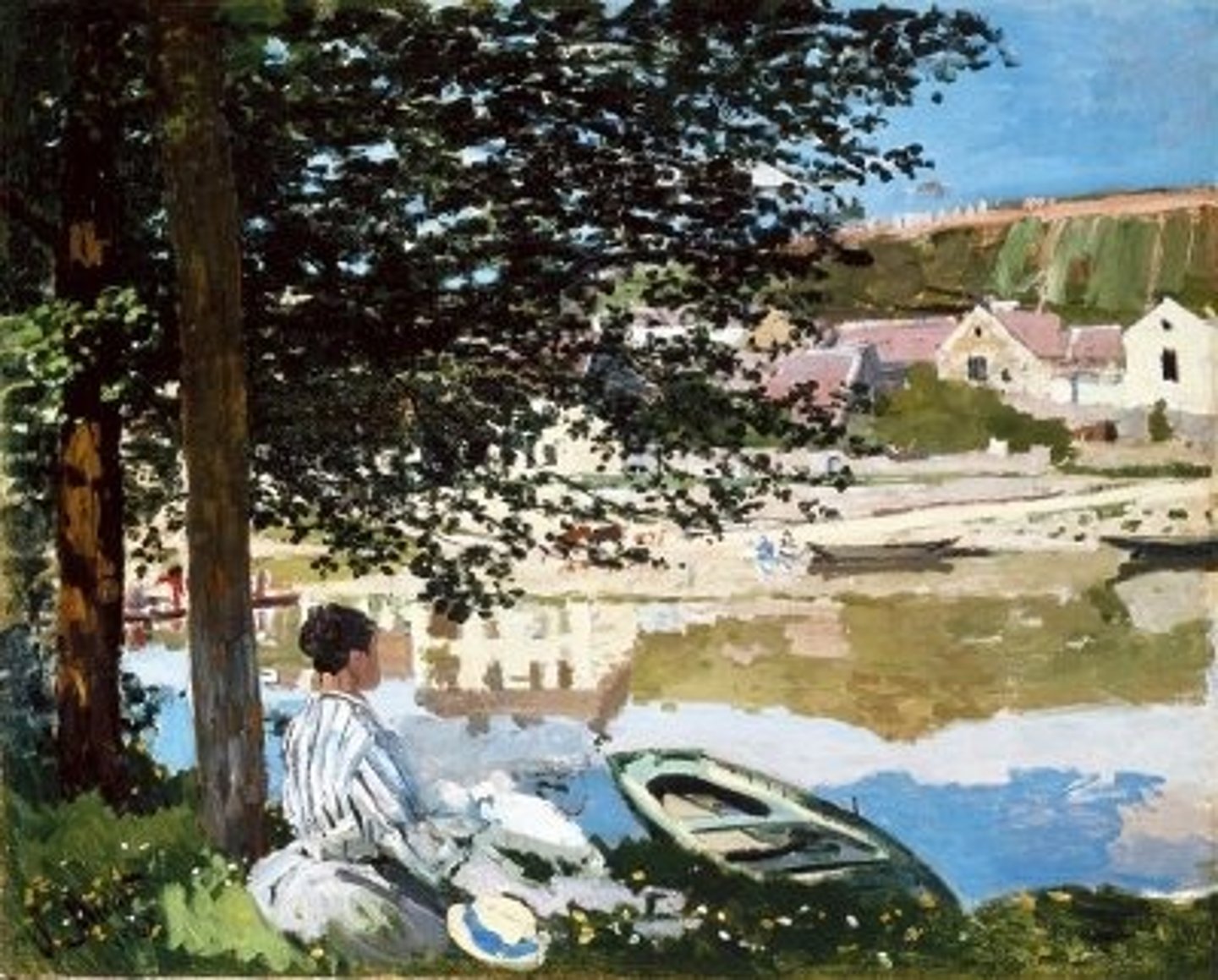
local color
the natural color of a particular object as it appears in normal light
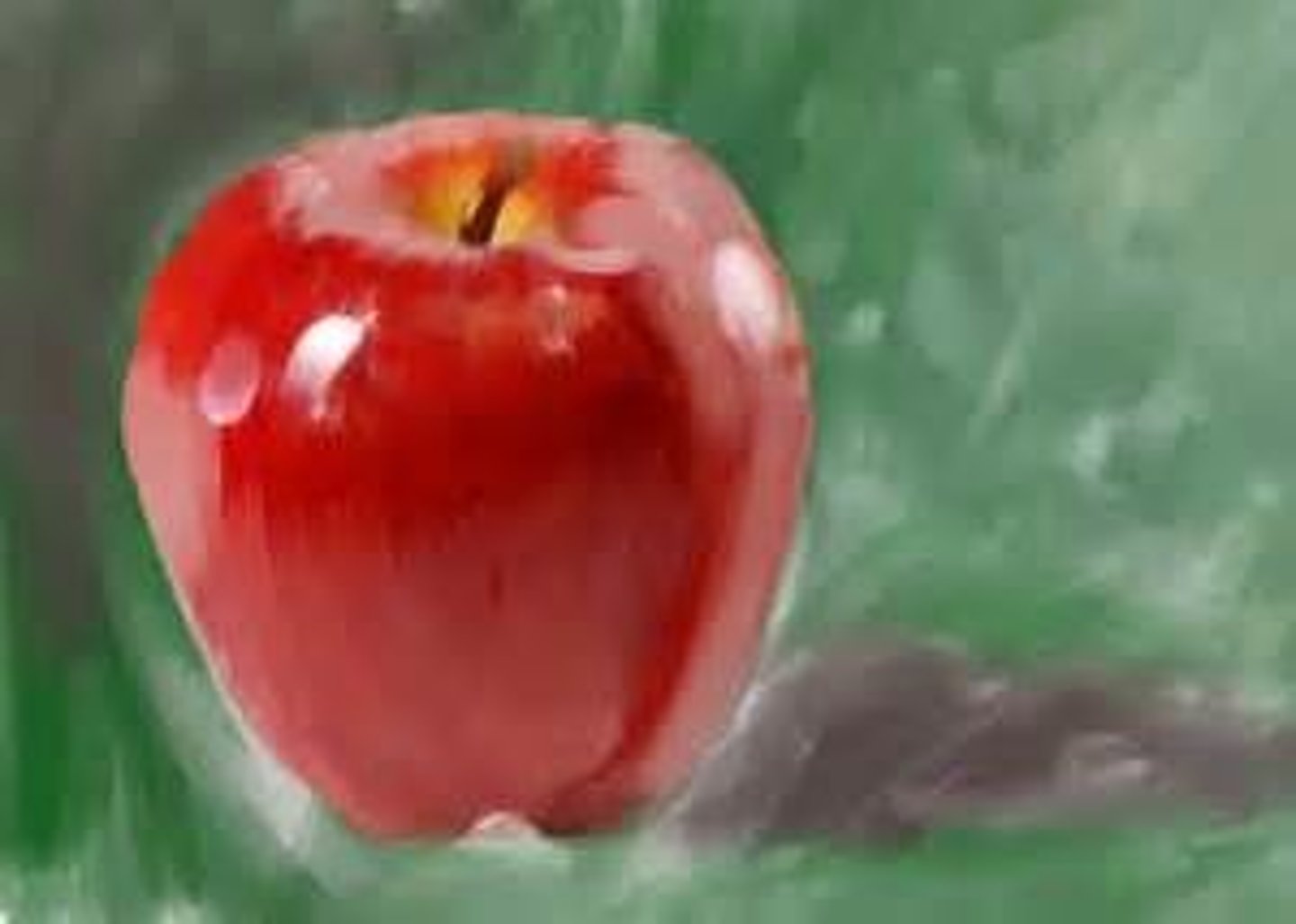
complementary color
the primary (red, yellow, blue) and secondary (green, purple, orange) colors across from each other on the color wheel; when juxtaposed, the intensity of both colors increases (known as simultaneous contrast of colors), when mixed together, they negate each other to make a neutral gray-brown
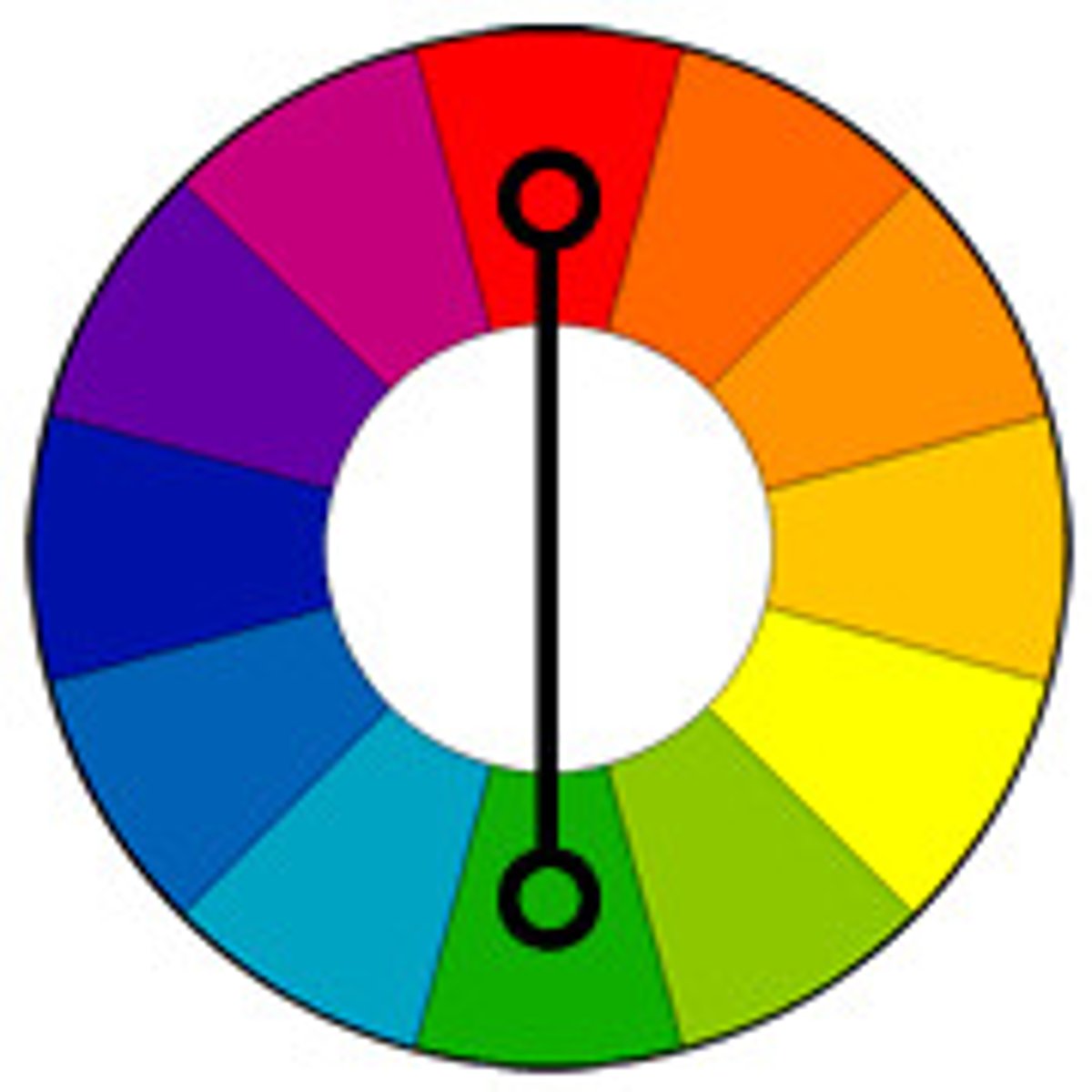
lithograph
a type of print in which the design is drawn on a flat stone block with greasy crayon and then ink is applied to the wet stone, adhering only to the greasy areas of the design
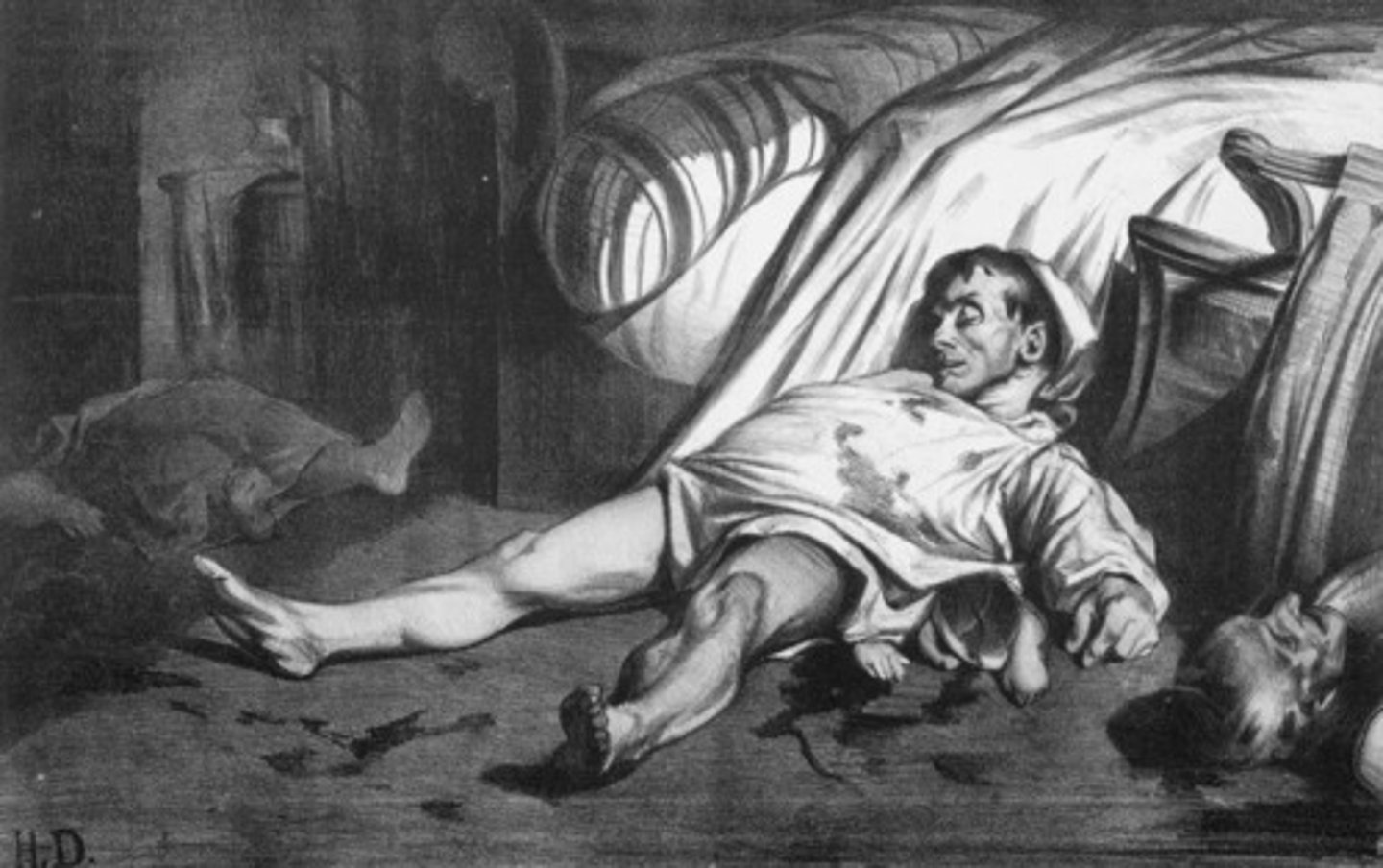
drypoint
an intaglio printmaking process by which a metal (usually copper) plate is directly inscribed with a pointed instrument (stylus); the resulting design of scratched lines is inked, wiped, and printed
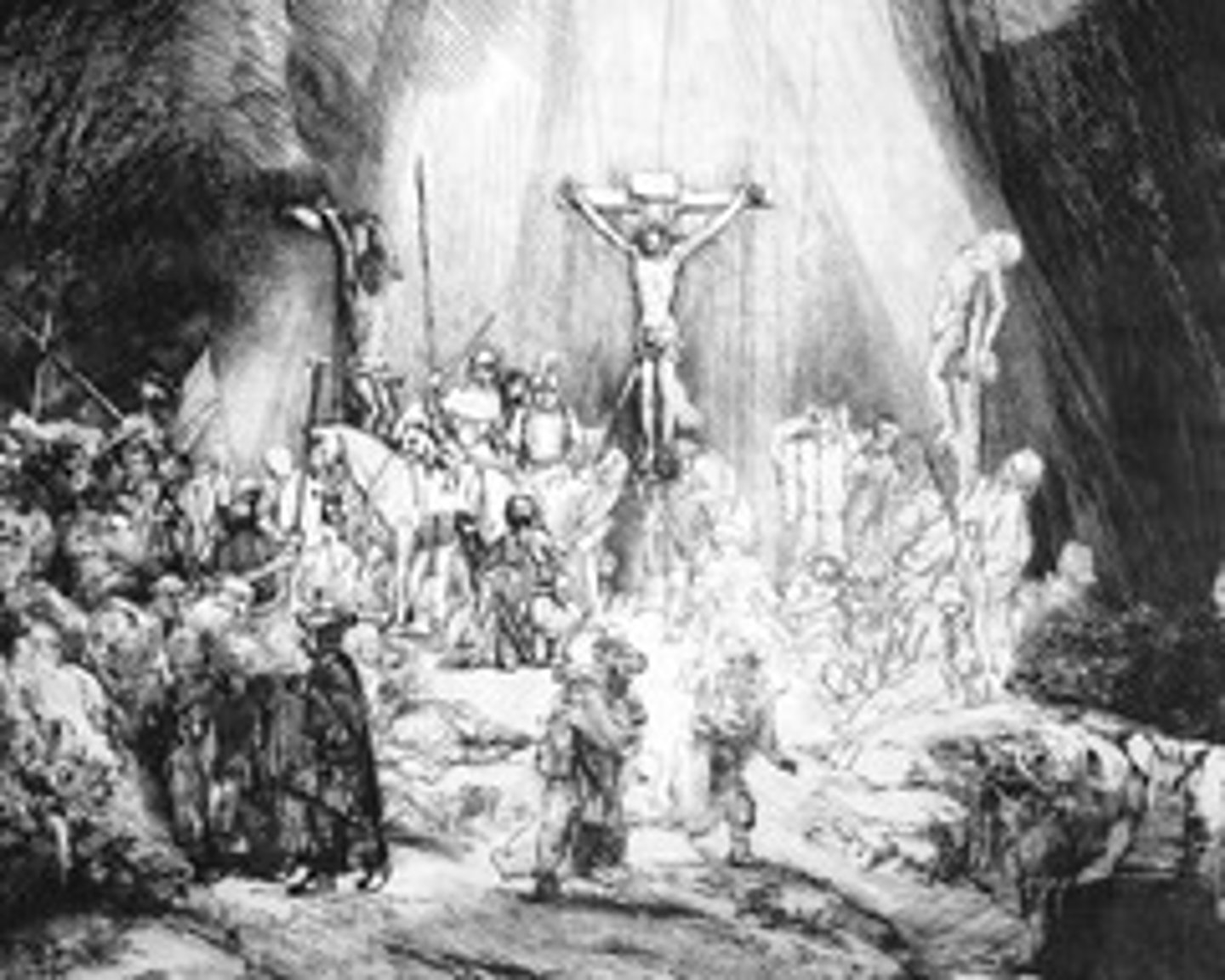
etching
a printmaking process similar to engraving in which the design is created through the corrosive action of an acid instead of by a burin
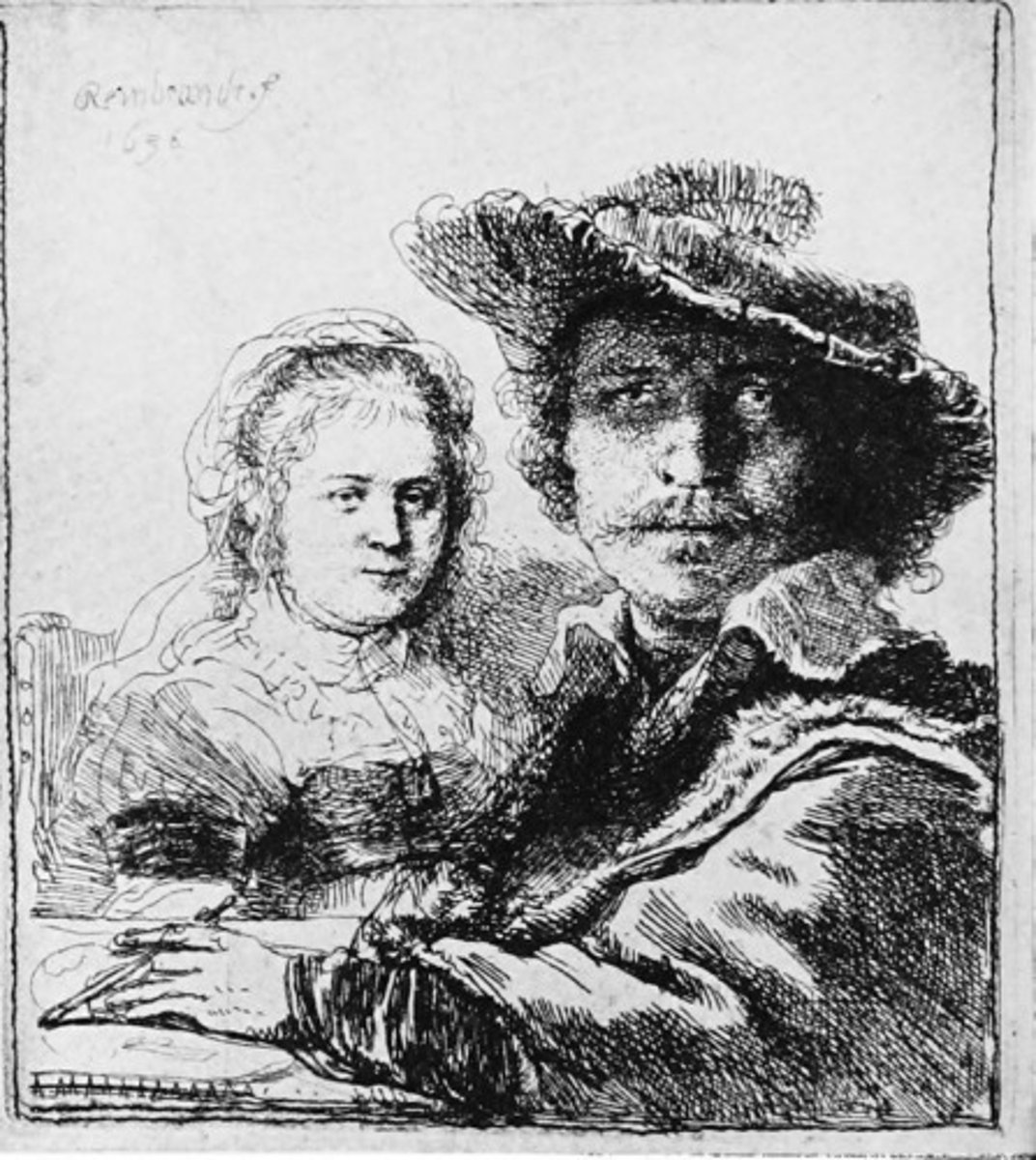
aquatint
process of etching capable of producing several tones by varying the etching time of different areas of a copper plate so that the resulting print resembles the flat tints of an ink or wash drawing
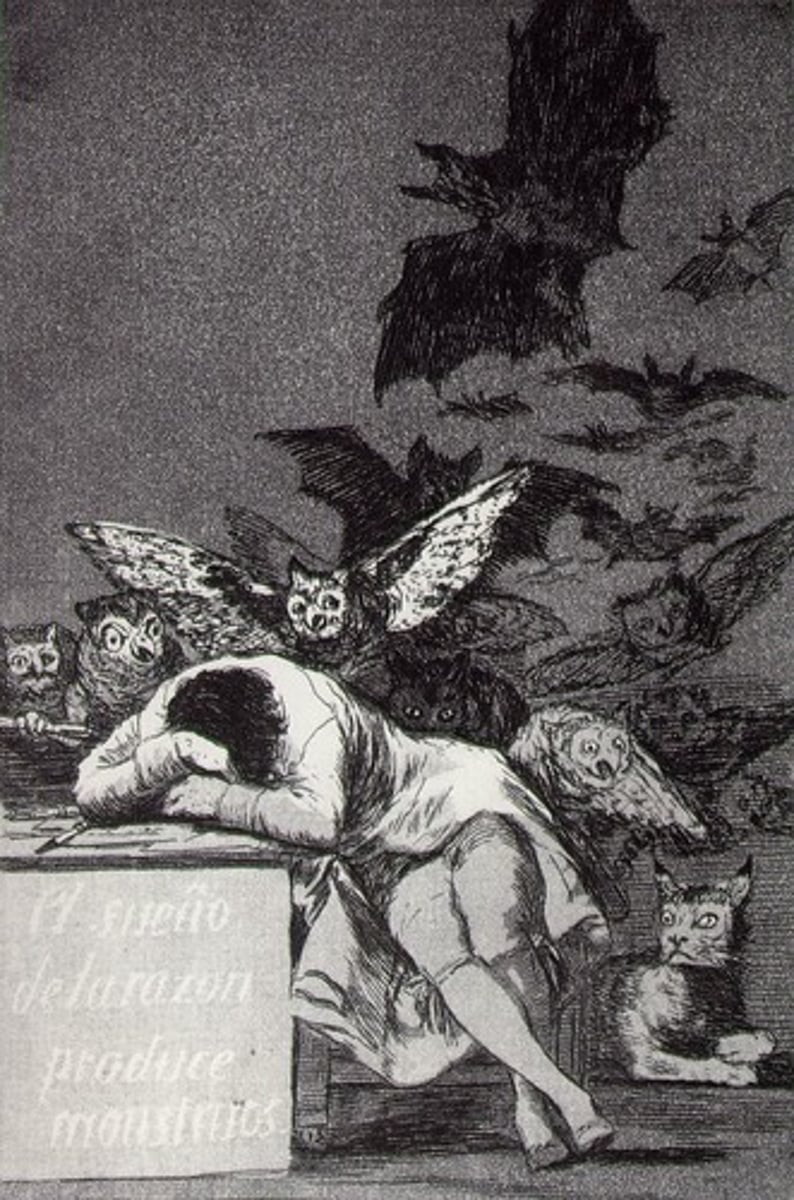
Realism is often considered the beginning of Modern Art - why? Why are both Realism and Impressionism considered avant-garde?
Avant-garde = advance guard. Realism artists are moving ahead, stepping ahead of the boundaries of convention. They are respond to rapid social changes that are transforming modern society, drawing inspiration from contemporary and everyday life.
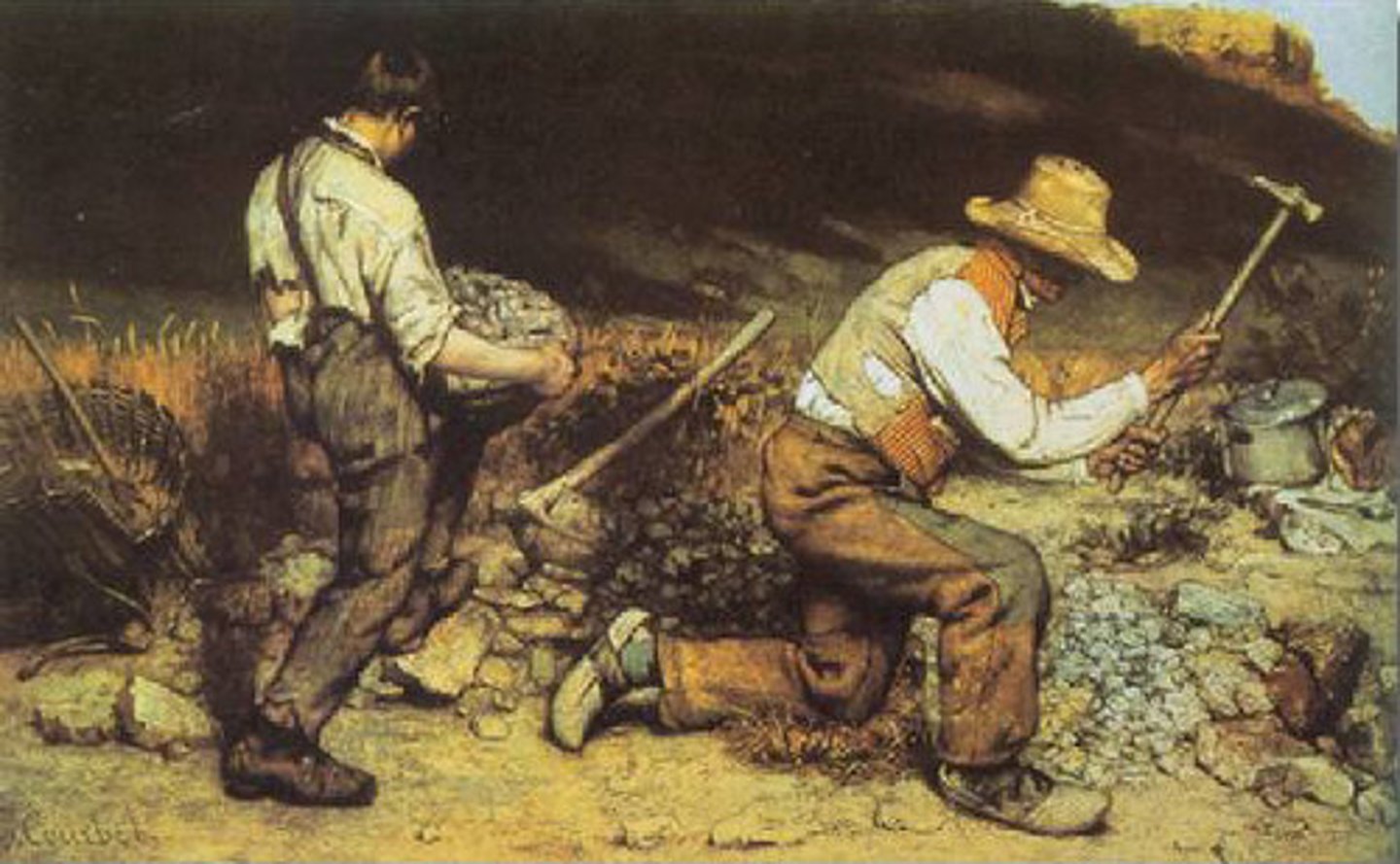
What were realism and impressionism artists rejecting and embracing?
They are drawing inspiration from the modern city as industrialization and urbanization grows. Age of steam engines, factories, mass production, and mass entertainment. A rise in the middle class is accompanied with slums and squalor. Rejected the traditional academic art as they viewed Salons as being out of touch with the present. They turned away from traditional themes (mythological, historical, biblical) and embraced contemporary life. They believed that art should faithfully record experiences of the everyday, ordinary life. Like Realists, Impressionists were anti-academic art and their works were shocking to contemporary audiences, especially style-wise
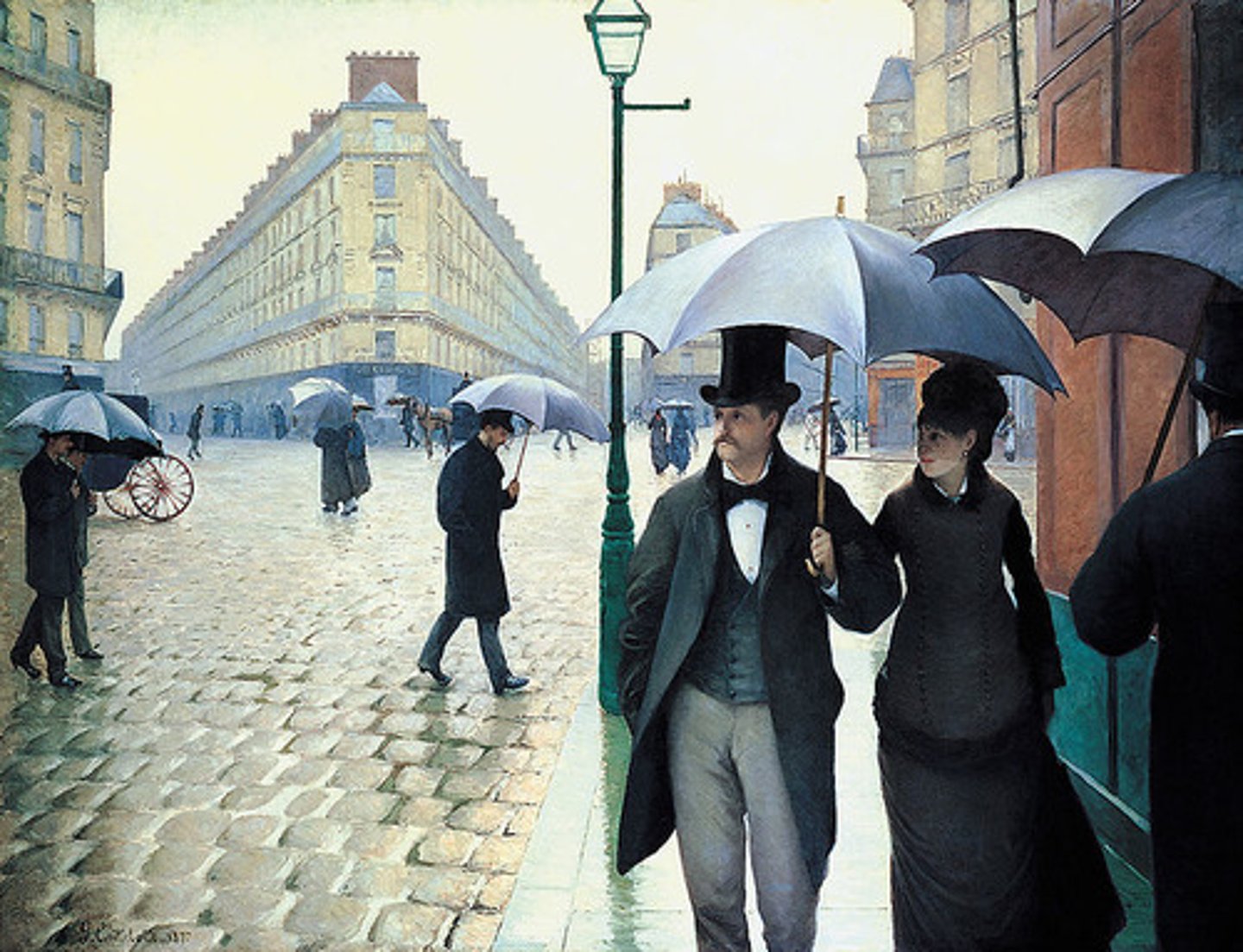
What are the artistic goals of the Realists? Of the Impressionists? What links the Realist painters and the Impressionist painters? What separates them? Does Impressionism have distinct goals from Realism?
Both impressionists and realists were anti-academic art and wanted to focus on modern life. Realists wanted to faithfully record sights and experiences of the everyday and capture the age of steam engines, factories, mass production, and mass entertainment. Impressionists were interested in capturing the momentary, the quality of light, weather, and other atmospheric effects. They were interested in spontaneity and the momentary. Both wanted to true to sight.
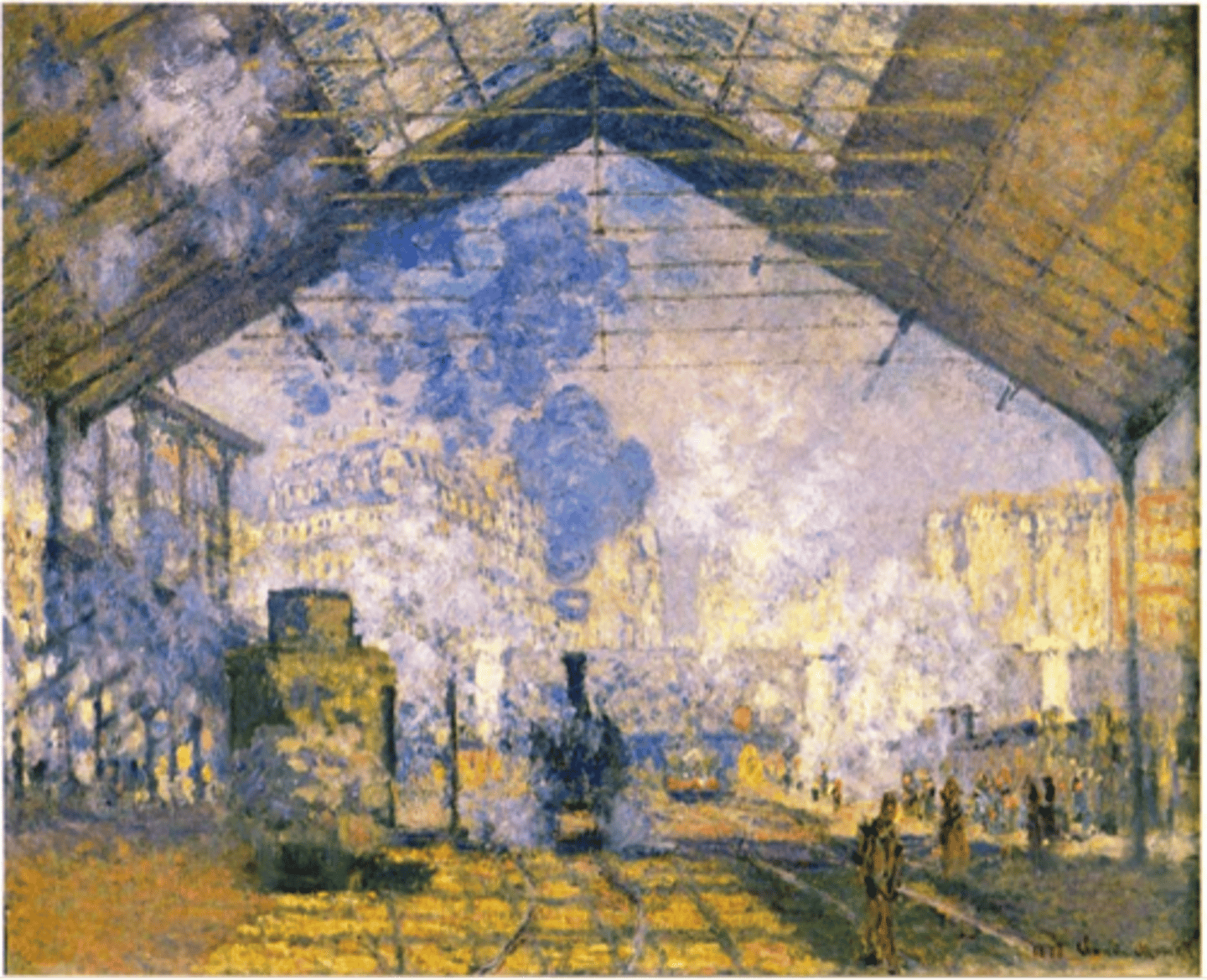
Impressionism Bracket Date
1860-1900
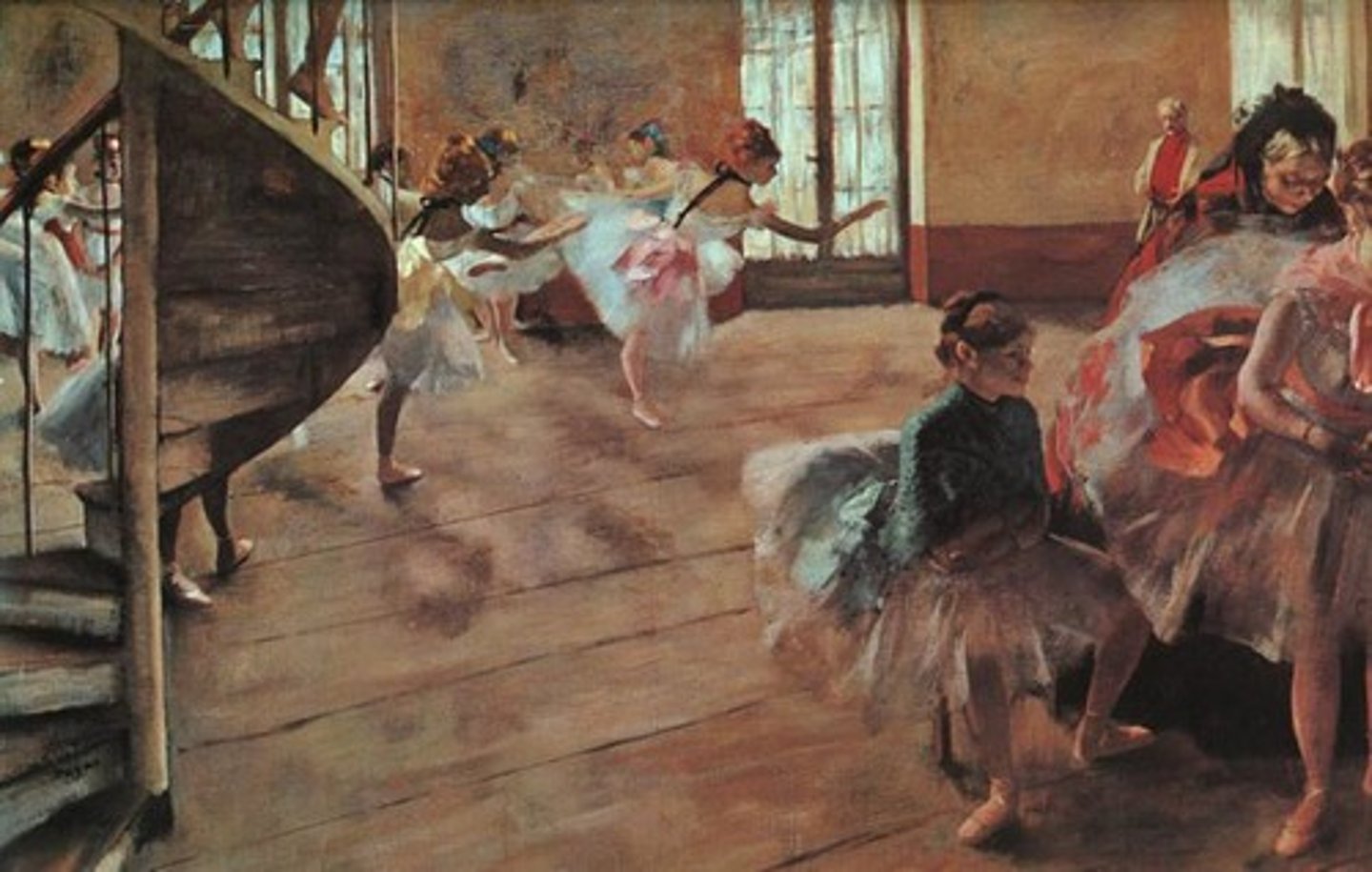
Realism and Early Photography Bracket Date
1848-1860
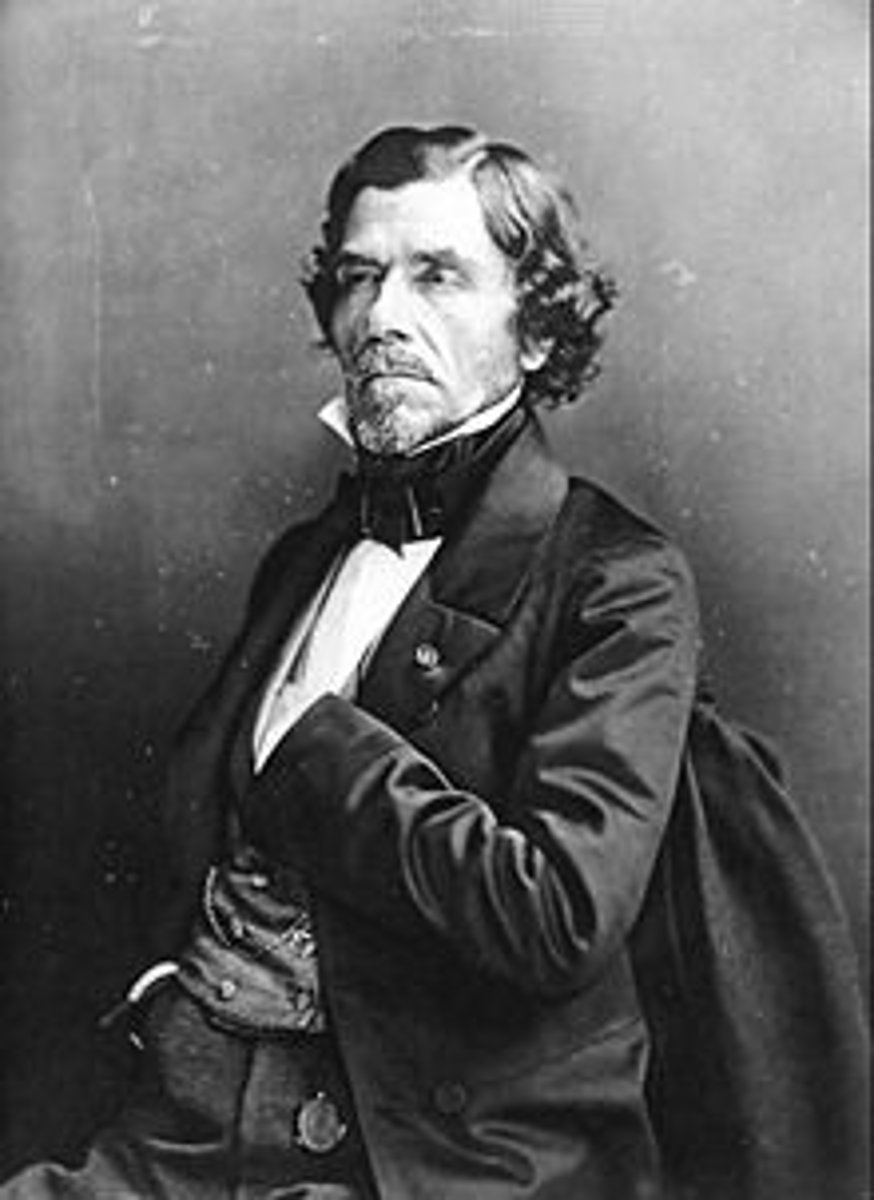
What political event effectively gives rise to Realism? Think about how the political identity of Realism affects subject matter & style. Consider specifically the case of Courbet and his Stonebreakers and The Burial at Ornans. What did critics - and Parisian citizens! - object to in Ornans?
Realism began following the 1848 French revolution. Courbet did not glamorize death and connected this revolution to revolutions of old. This was offensive to Parisian citizens. He captured real life as it was, in all of its hardship, which was very different from what everyone else was doing. Not to mention, they hated the way he applied paint.
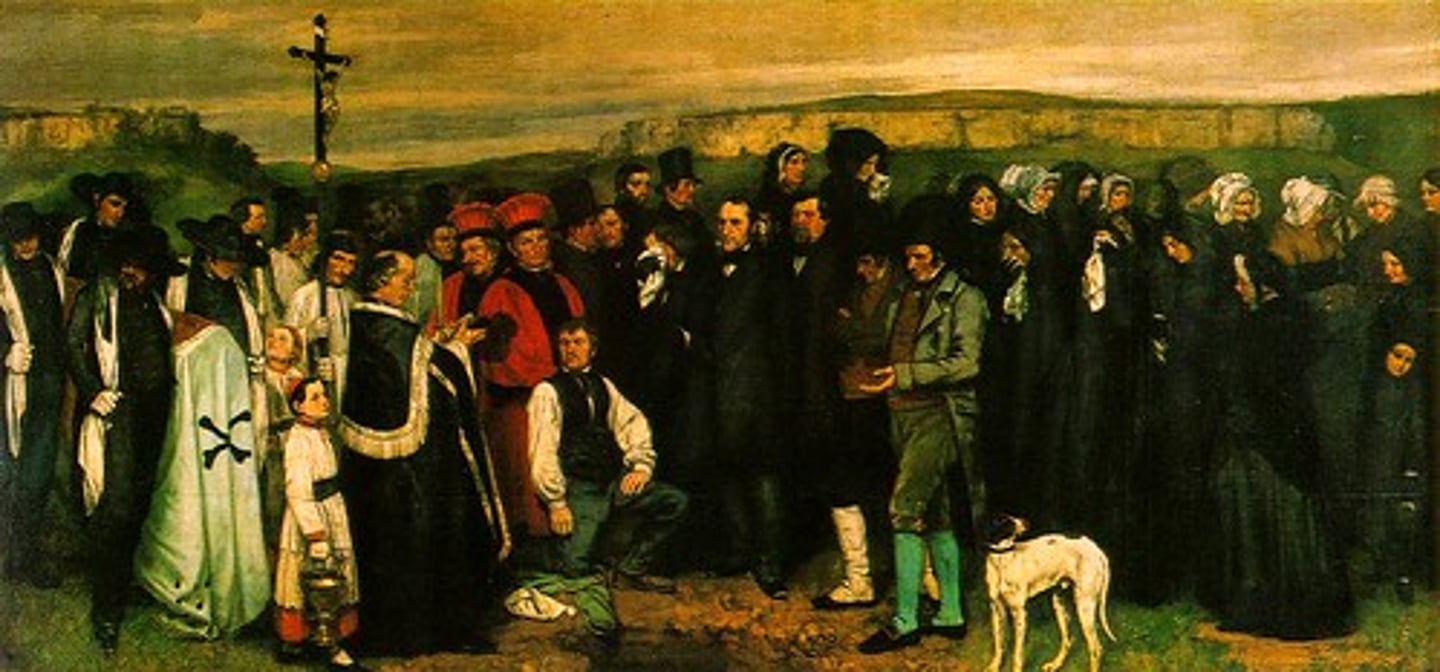
How does the trend away from Romanticism towards more realistic imagery affect the subject and style of art? How is Daumier's Rue Transnonian the epitome of a Realist work of art? (think: subject matter, style, medium, etc.) What has happened in this scene? How do we as viewers react?
This piece depicts the aftermath of an uprising that had occurred only a couple months prior where a policeman was shot and killed, so another officer went to the workman union's house and killing a bunch of them. This was a print, which meant it could be made quickly and mass produced. Prints were used to confront authorities in France (political protest). Diagonals of death, cropping out part of the figure on the right indicates that the slaughter extends past this image, the lighting highlights the violence.
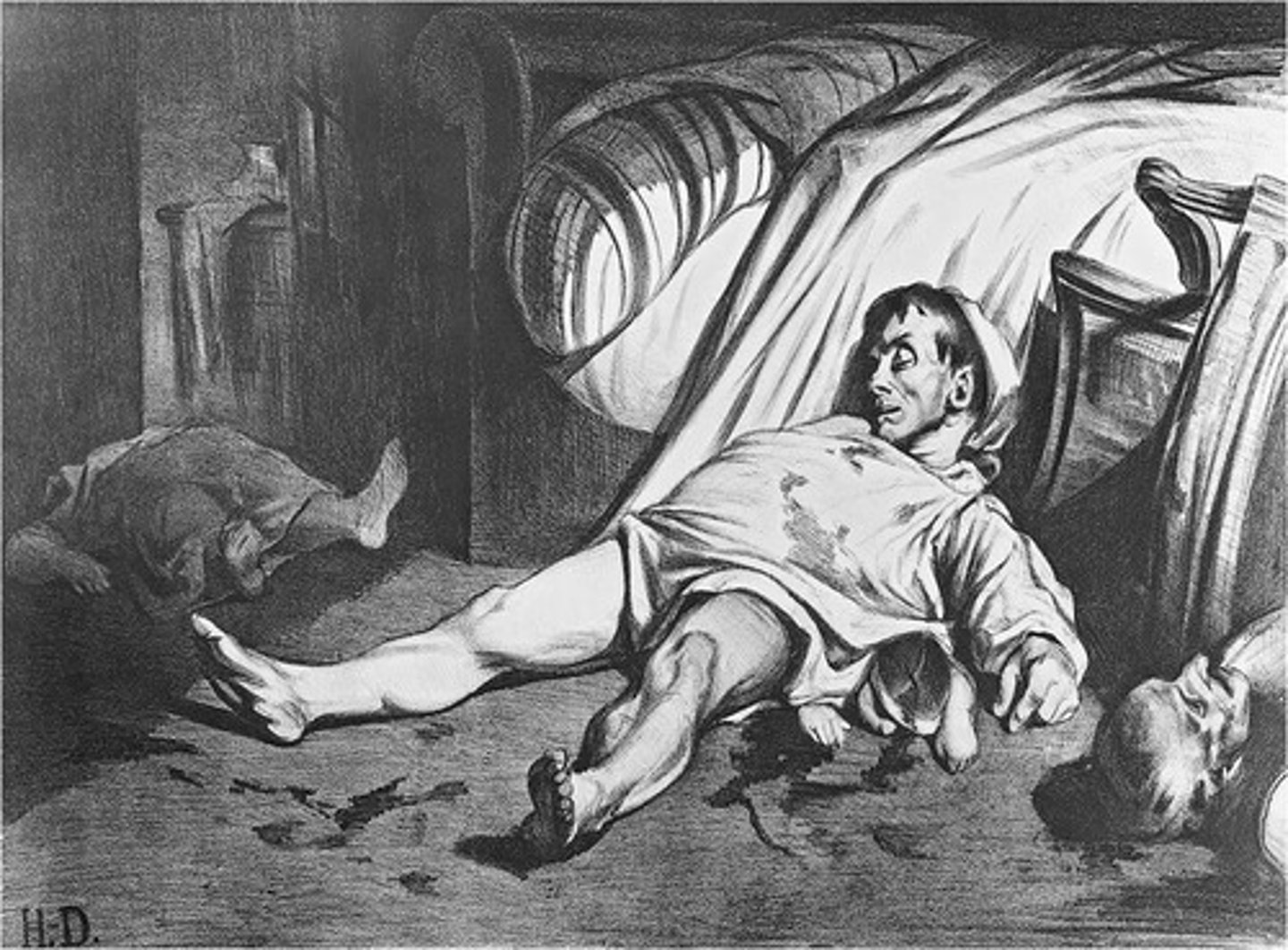
What art form most epitomizes this push towards "unvarnished truth"? (hint: it was not even considered an art form by many at this time!) And what is different about this medium than any other medium we've studied? How does this choice of medium affect the viewer's response to the images?
Photography! This art form depicts the real and natural. We accept it as the truth.
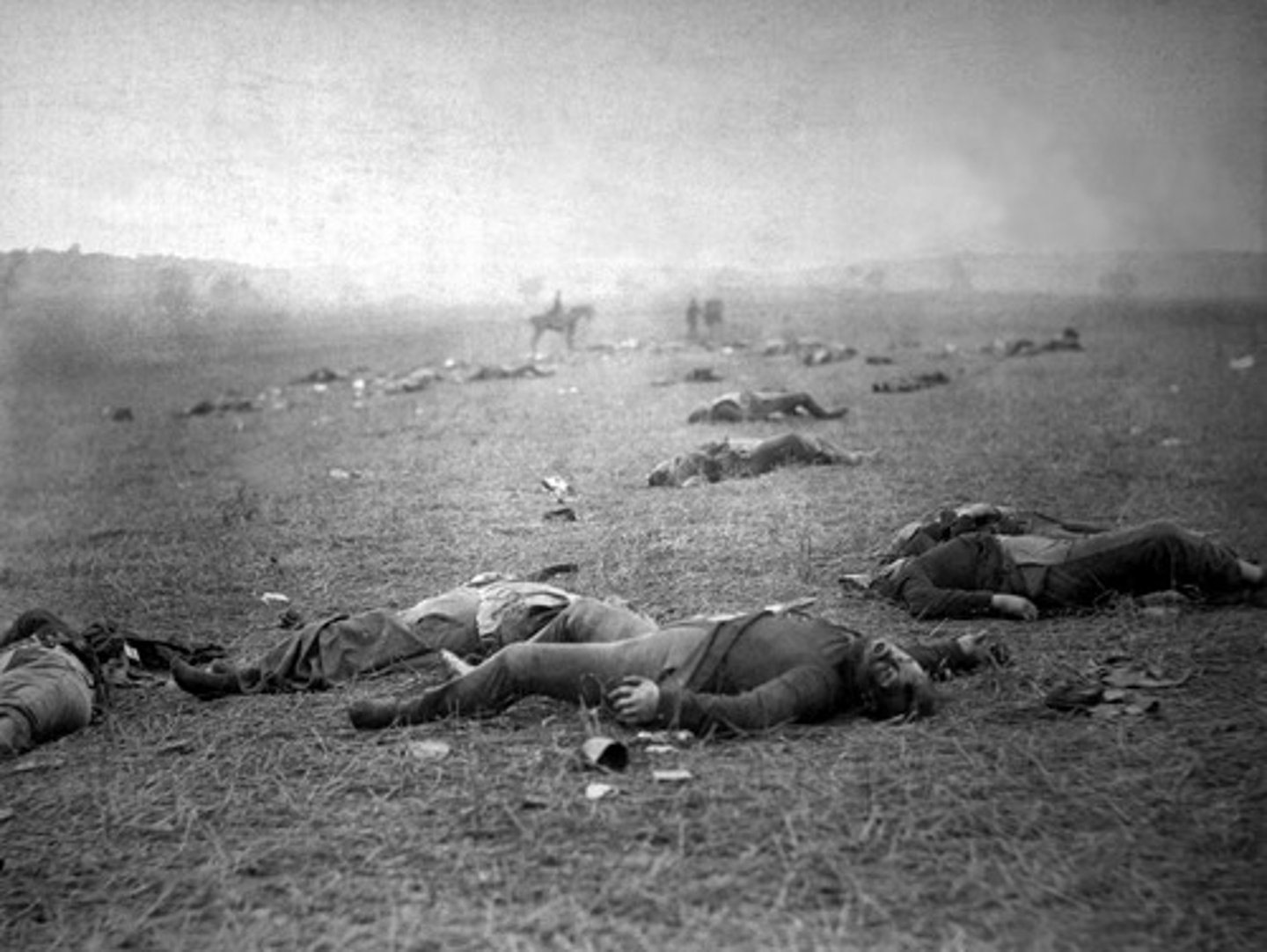
Realism was also embraced by American artists like Thomas Eakins. How was his Gross Clinic received by critics? Why? What was Eakins' intent?
Critics rejected The gross clinic because it was too gritty and because of the application of paint. Eakins was determined to portray the raw, gritty truth.
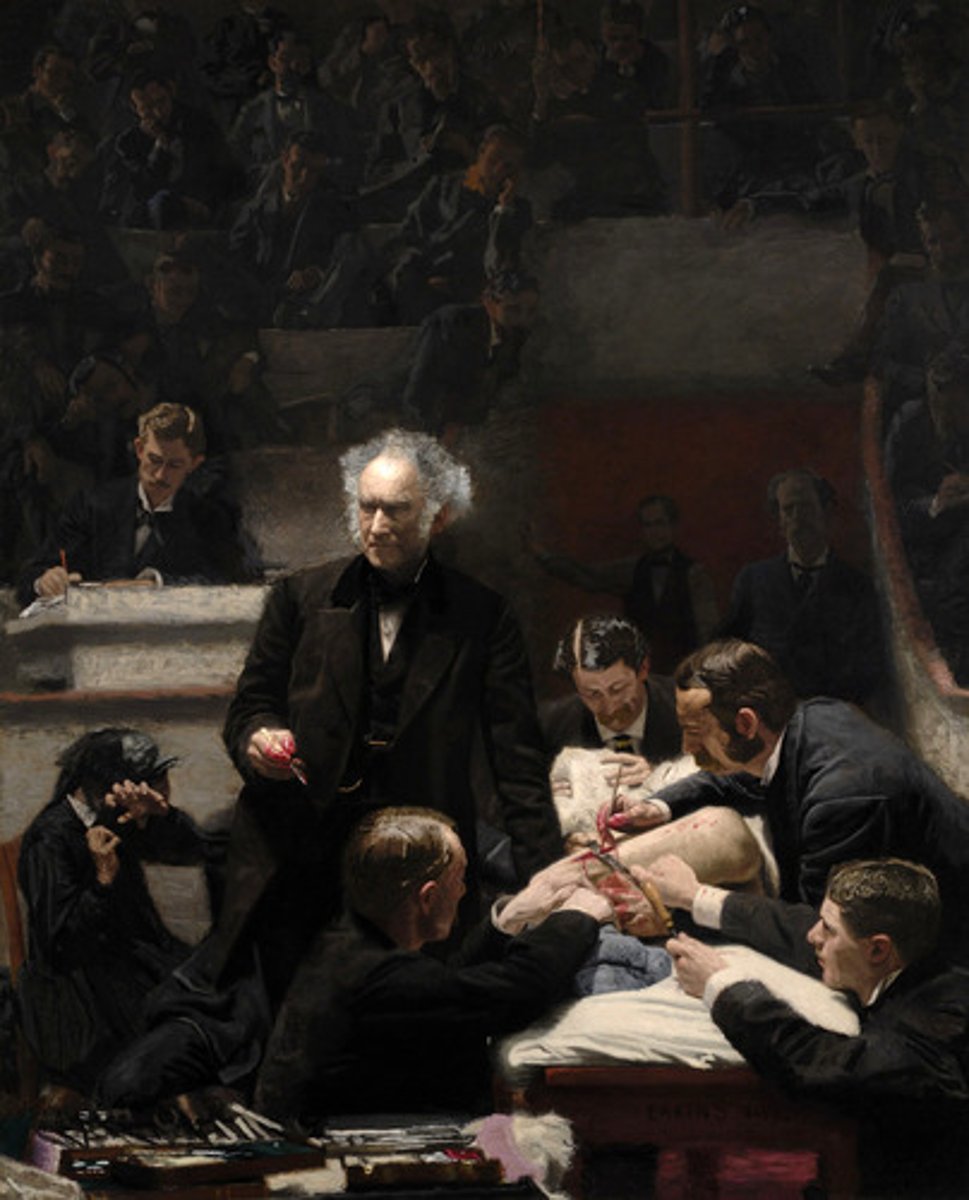
Manet is often considered the first modern artist - why? How does he provide the bridge between Realism and Impressionism?
Manet wanted to depict modern life and modern life, but he did so with a radical painting style, more like that of the impressionists.
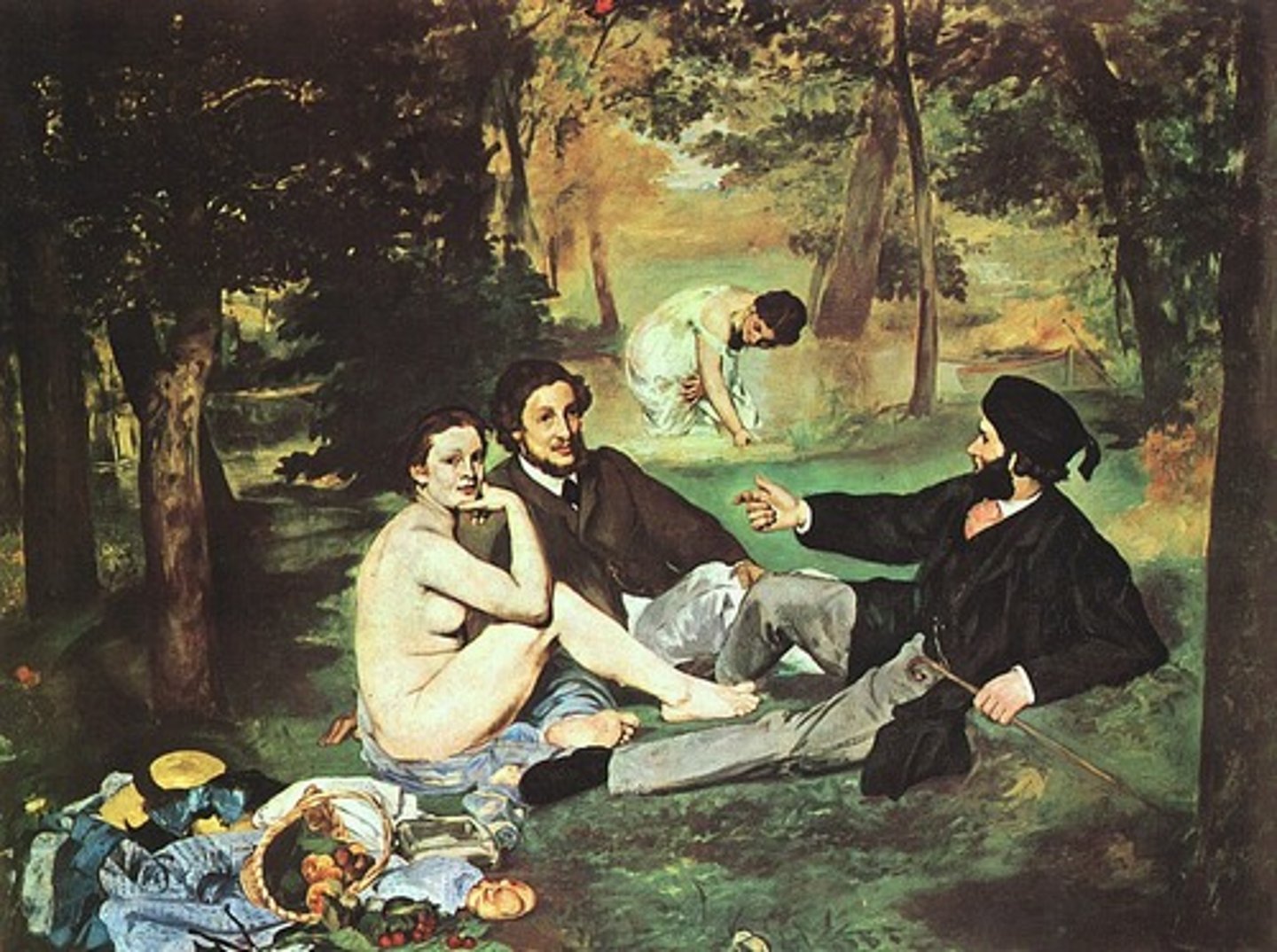
The work of Manet was considered shocking for its time - why? Think specifically about Manet's Luncheon on the Grass and why it is consigned to the Salon des Refusés as well as his Olympia. What were audiences used to seeing at the Salon? But is Manet abandoning all traditional imagery?
Luncheon on the Grass depicted a naked woman with clothes men AT THE TIME, meaning she was a prostitute. He was forcing men to grapple with the idea of sex for sale at their time. The naked lady is unashamed. She is a modern woman, not mythological or idealized. The paint application was not "intellectual", os they thought Manet just didn't know what he was doing. Maney referenced a lot of other artists, such as Titian, and Manet's Olympia similarly made the viewers aware of the reality of sex for sale at their time.
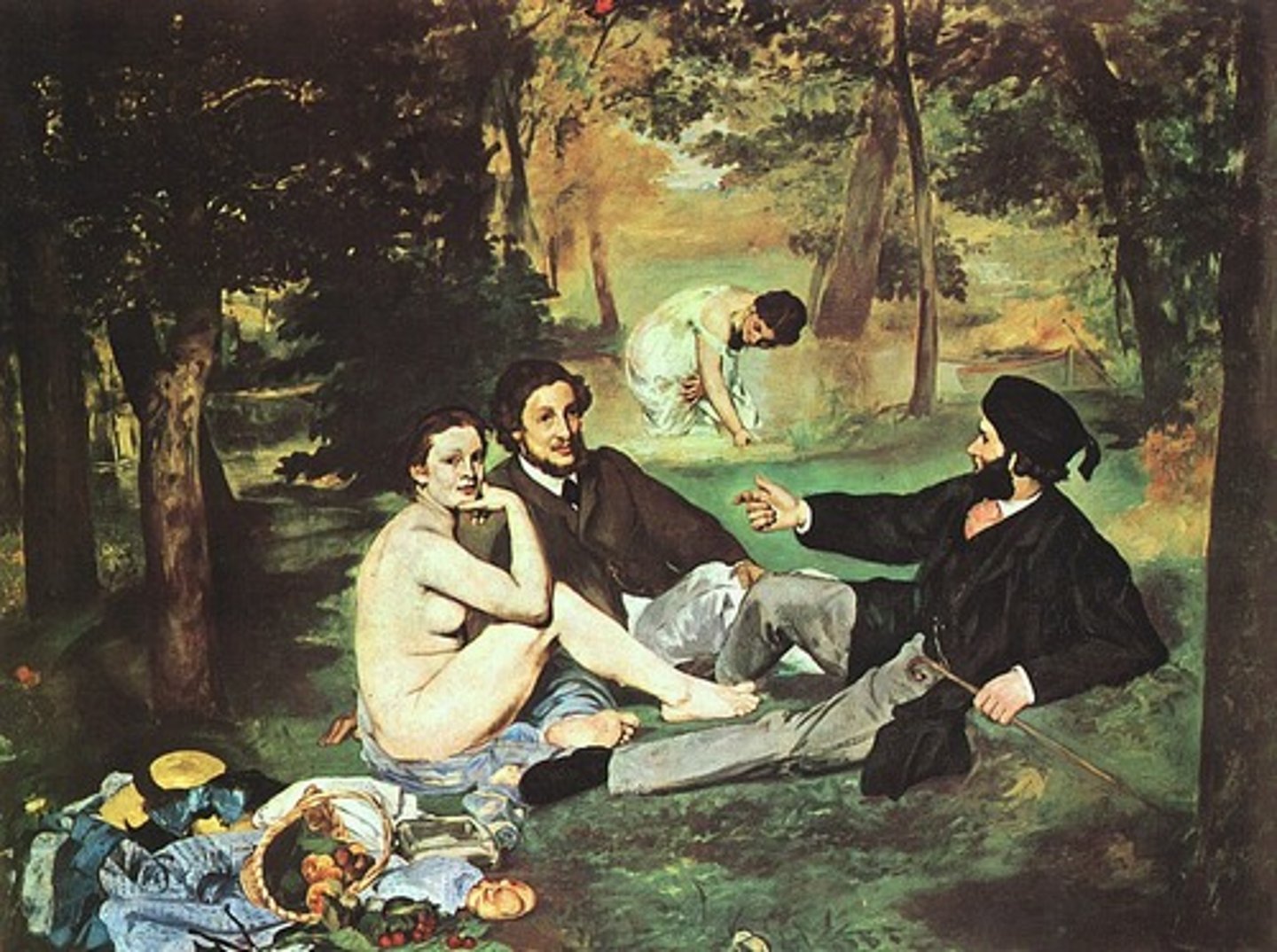
What are the key stylistic characteristics of the Impressionist movement? What are typical Impressionist subjects?
Focuses on modern life and the urban city or scenes of suburban leisure. Impressionists were interested in capturing the momentary, such as lighting, weather, or atmospheric effects. They used complementary colors and simultaneous contrast in brushy, flickery, patchy strokes to create a sense of spontaneity.
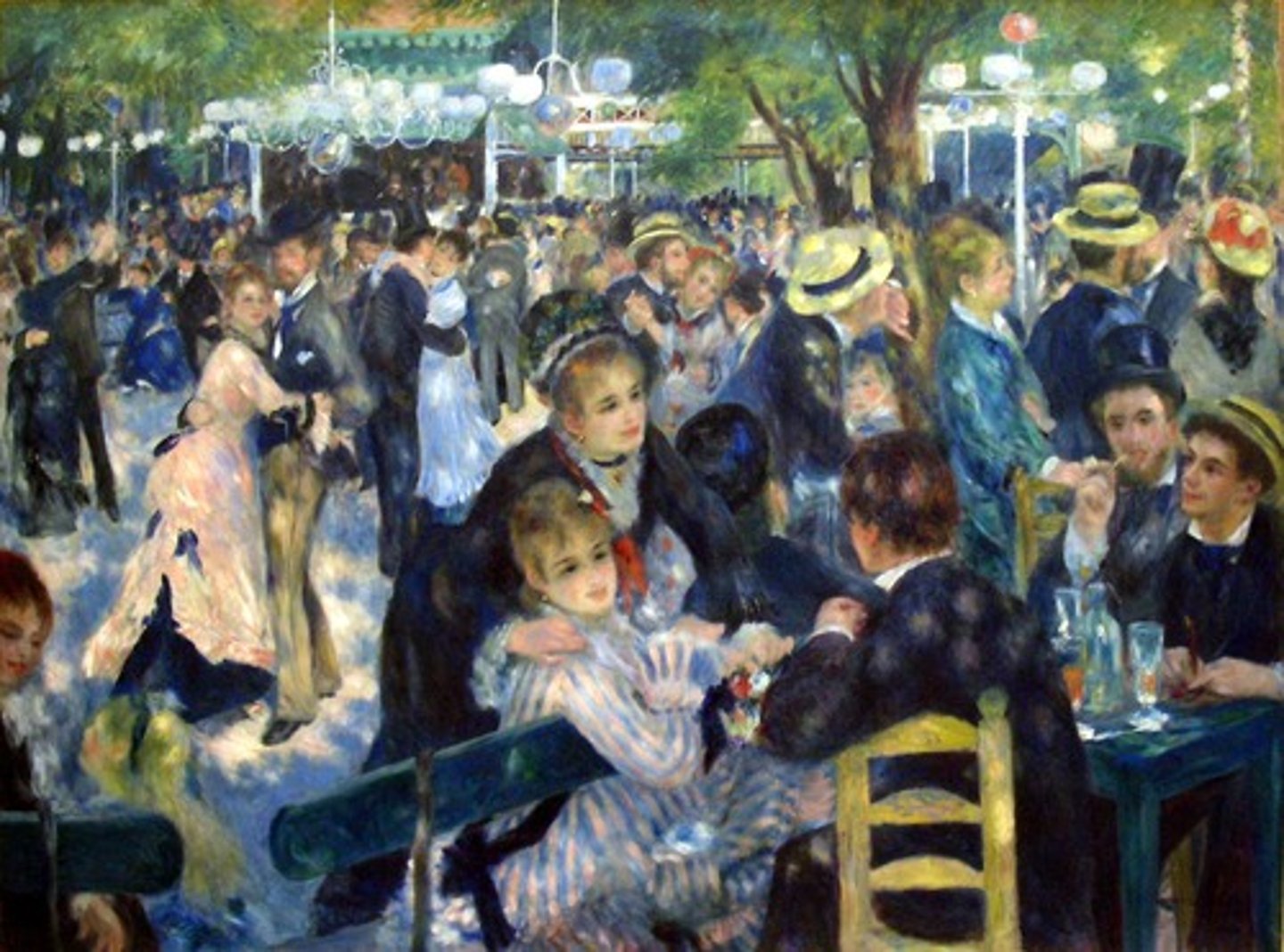
[be able to discuss the breadth of Impressionism, i.e. Monet, Degas, and Caillebotte are all Impressionists - how does each fit into the movement?]
Caillebotte and Monet both focus on nature and the weather, but Caillebotte is not as brushy as Monet. Degas works less en plein aire than Monet and captures more entertainment of Paris rather than nature.
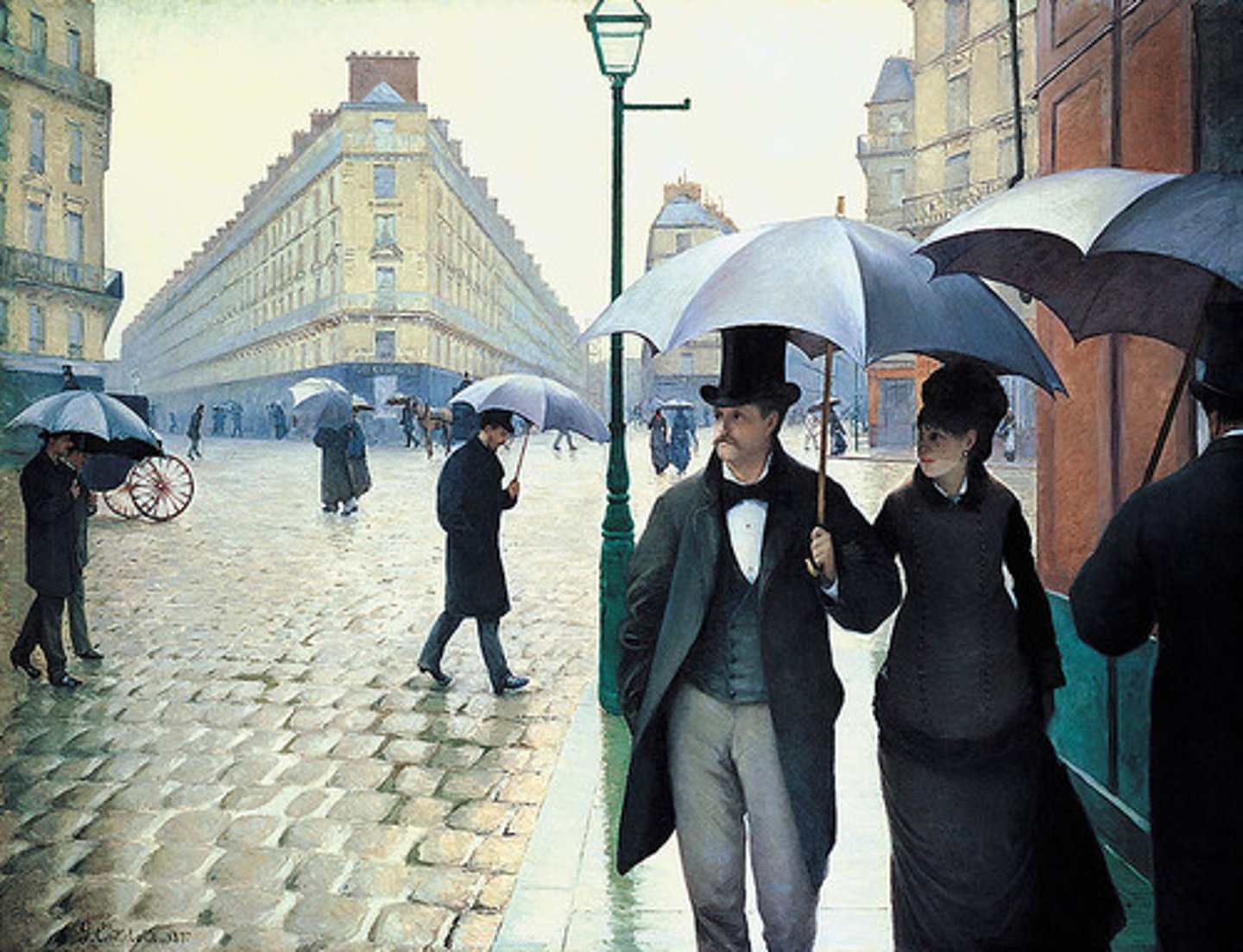
What advance in materials makes it possible for Impressionists to paint outdoors (en plein air)? And why the interest in painting outdoors? (specifically for someone like Monet)
Paint now comes packaged in tubes, artists can paint outside. Money likes to paint outdoors so he work right from life to capture fleeting moments of nature.
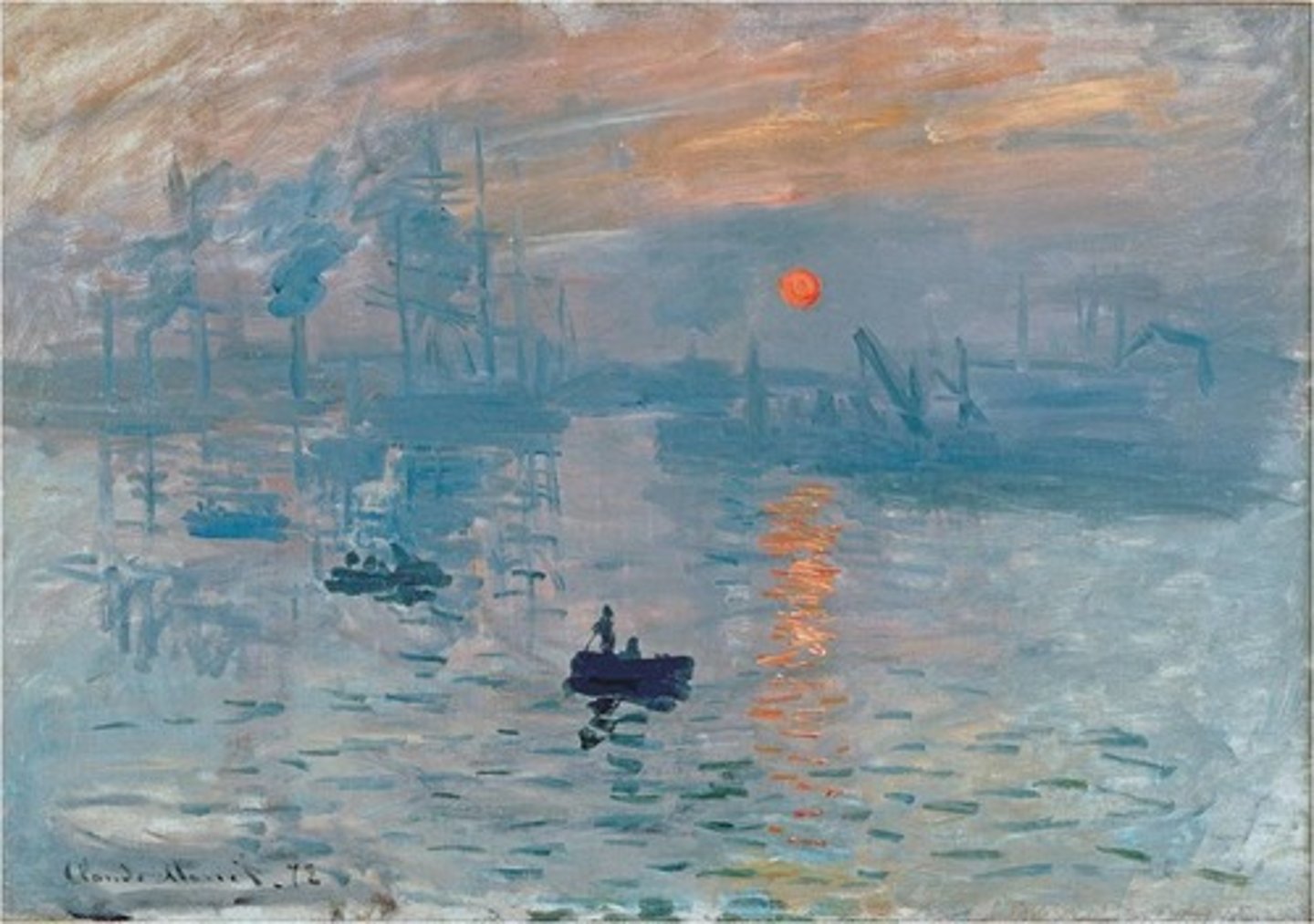
Why does Monet paint so many series? (i.e. Gare St. Lazare, Rouen Cathedral)
He would capture the transitory times in series. he could show the passing of time and season.
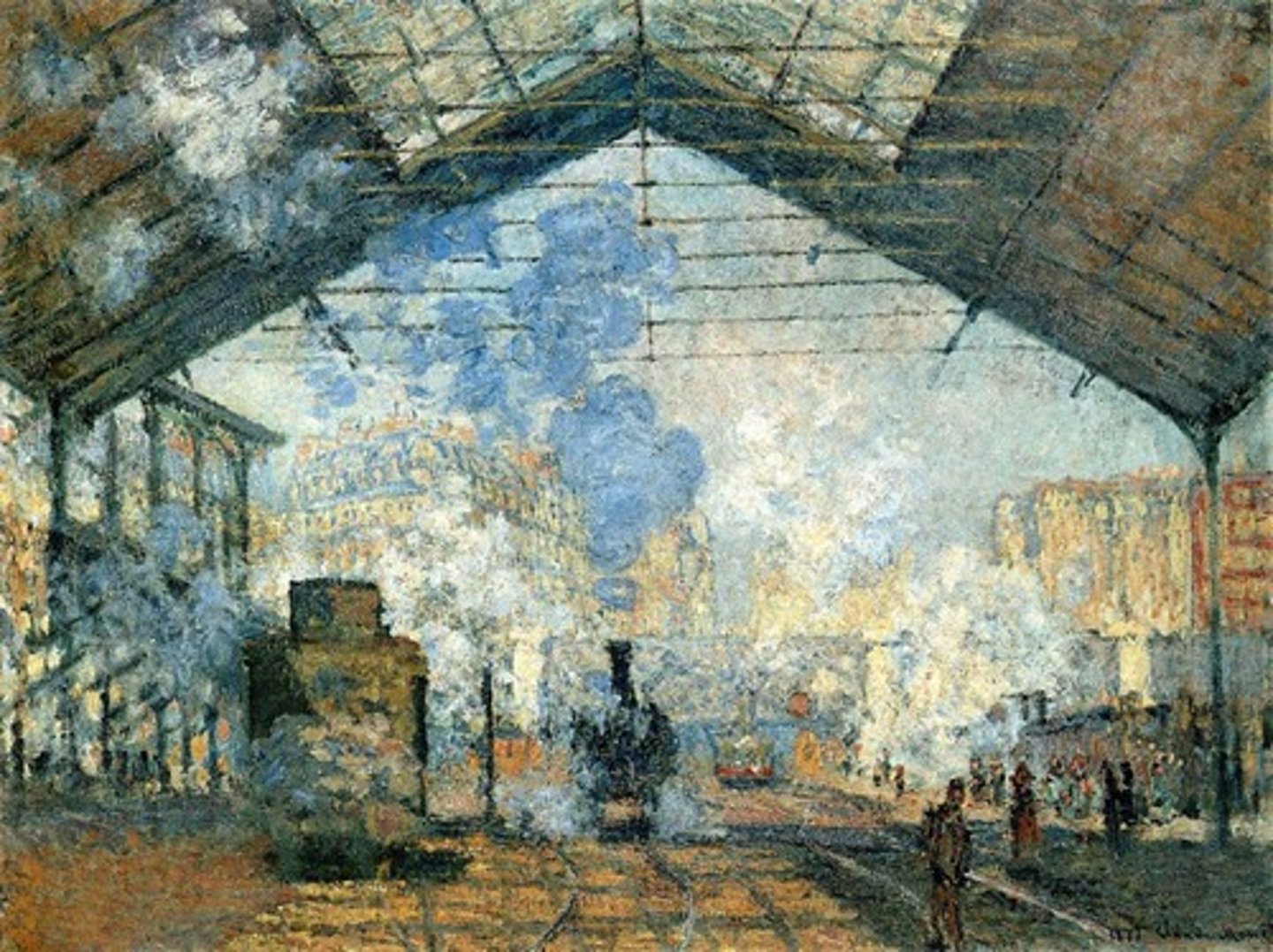
How do Japanese prints influence Impressionist artists? Consider Degas's images of the ballet and the Parisian Opera, his bathers, as well as Cassatt's Maternal Caress
Cassatt was inspired by Japanese prints in the blocks of color, linework style, and material. Cassatt could paint, but she did Maternal Caress as a soft-ground etching with drypoint. For Degas and Cassat, like many Japanese artists, their prints focused on women and their daily routines. Flat colors, perspective, subject matter.
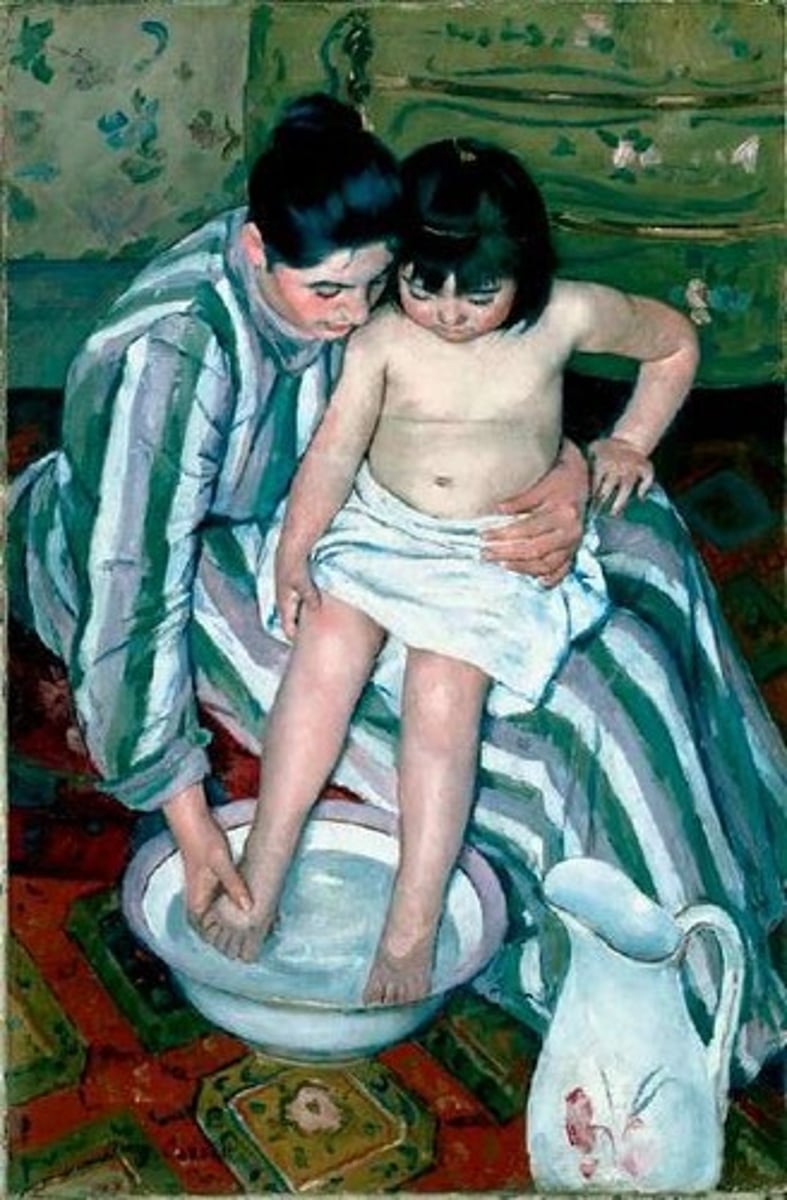
What are the challenges that Mary Cassatt faced as a woman artist in the Impressionist movement that are unique from those of her male peers? What subject matter did she tackle? Do her artworks reveal a different point of view than her male contemporaries?
Cassatt focuses a lot and their role in society at the time. She comments on the unwarranted male gaze and the objectification of women. Cassat was very aware of the boundaries of women at the time and how to establish yourself as a woman in a man's world. It was becoming easier for women to become artists, but it was still a challenge. She was married to Manet's brother.
